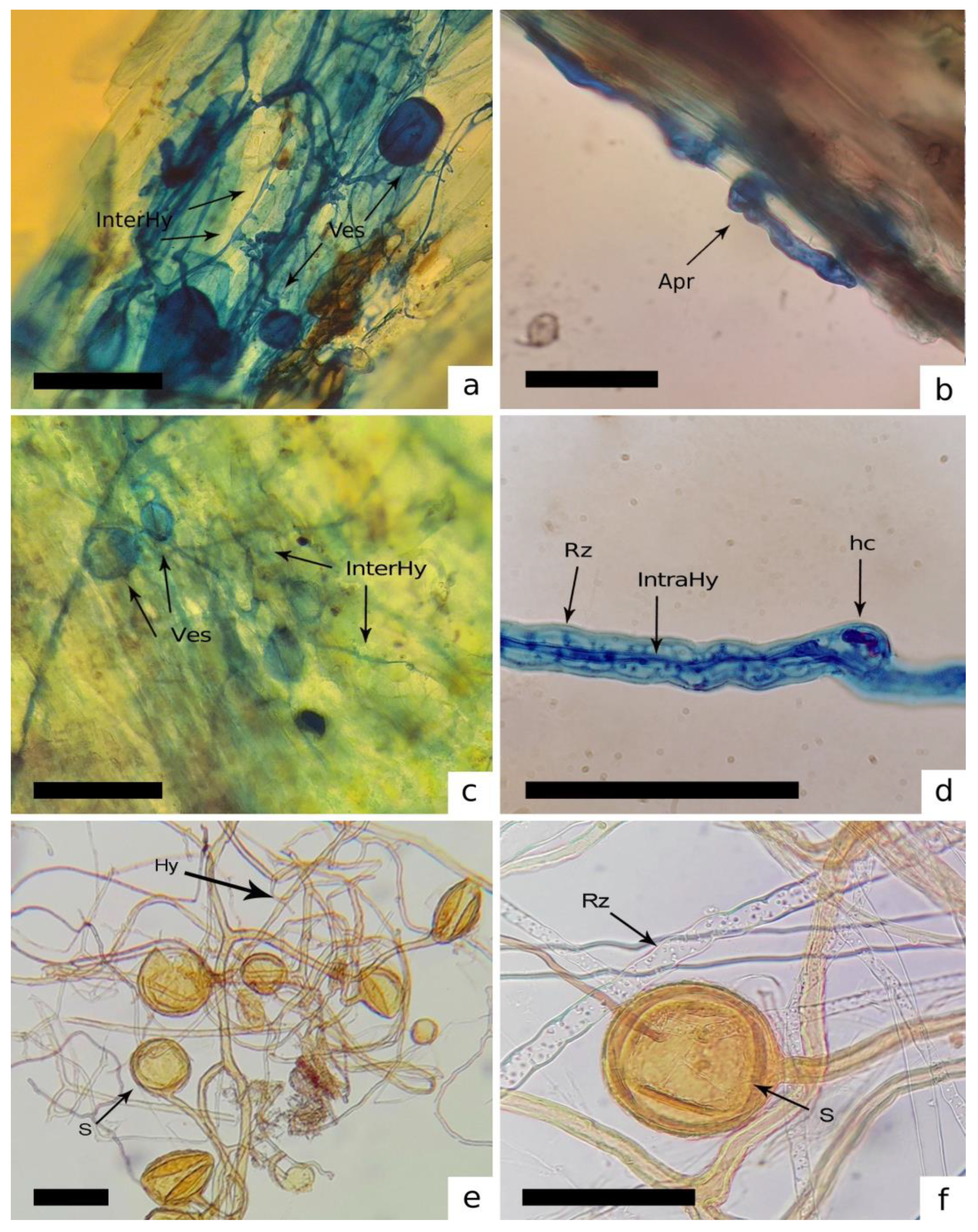Diversity, 15(3), 442;, 2023
Abstract
The evolutionary history of the symbiotic association between arbuscular mycorrhizal fungi (AMF) and embryophytes dates back to the Devonian period. Previous ecological and physiological studies have described the presence of arbuscules, inter- and intracellular hyphae, vesicles, coils and spores, in liverworts and hornworts, which are considered absent in mosses. This study aimed to report the presence of AMF in a community of bryophytes (mosses and liverworts) from Punta Lara Natural Reserve, Argentina. Senescent and green sections of gametophytes were stained and, following microscopic observation, revealed AMF structures. We found intracellular hyphae, vesicles, spores and sporocarps associated with thallus and rhizoids of mosses and liverworts and senescent moss caulidia. The morphological characterization of spores resulted in the determination of Rhizophagus intraradices and Dominikia aurea. The species D. aurea is reported for the first time for Argentina. Sequencing of the D1 variable domain of the LSUrDNA from AMF spores mixes plus hyphae resulted in high similitude to the Dominikia sequences available from NCBI. This study reported the presence of AMF associated with declining and senescent gametophytes of bryophytes (mosses and liverworts) in a Natural Reserve in Argentina. These findings open up new lines of study, which should further investigate these associations and their diversity, physiology and significance.
Keywords
Dominikia aurea; new report; Rhizophagus intraradices; parasites/opportunists; ecological preference; mosses; liverworts

